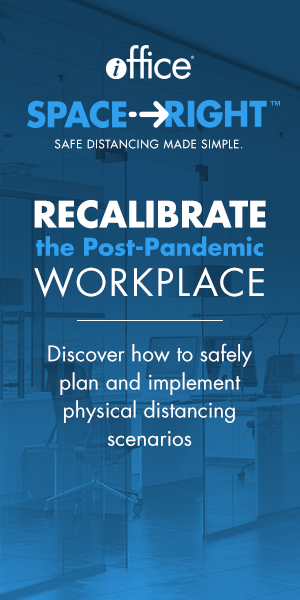Commercial Rent Payments: Signposts on the Road to Recovery

Across the country, offices and retail stores are beginning to reopen. On the surface, things are looking more positive for the commercial real estate market than they did in March or April. But do the numbers justify optimism? In terms of rental payments from office and retail tenants, the data suggests that a celebration would be a bit premature.
The MRI Software Market Insights team compiled and analyzed data from 900 commercial and retail users of our property management solution, most of whom are based in the U.S. The timeframe encompassed March, April and the first half of May. As of May 15th, only 68% of tenants within this pool had paid their May base rent. Thatís slightly lower than the percentage of tenants who paid their April base rent by mid-month: 73%. Before we jump to conclusions, however, letís keep in mind that this is a mid-month snapshot and we expect collections to improve through the rest of May.
Mid-month caveat notwithstanding, here are three key findings:
1. Retail continues to struggle
Just over half (51%) of retail tenants paid their base rent by mid-May. This is less than the percentage who had paid by the end of April: 56%. The numbers are even more startling when you compare them to March, when 91% paid their base rent.
2. Non-retail tenants are faring better, but theyíre also experiencing difficulties
77% of office/other commercial tenants paid their base rent by mid-May, which of course is a great improvement over retail, but not as good as the April figure of 81%, and a big step down from the March figure of approximately 92%.
3. Commercial tenants are prioritizing base rent over other lease-related charges
When we reviewed payments of all charges, including rent, common area maintenance, and taxes, we discovered that the percentages declined further. Only 46% of retail tenants and 75% of office/other commercial tenants paid all of these charges by mid-May.
Takeaways
Several factors underlie these results. One obvious factor is the ability to pay. Non-essential businesses that couldnít operate online encountered financial difficulties. Bricks-and-mortar retailers without e-commerce capabilities fall into this category. Many office tenants, in contrast, could conduct business remotely. Accordingly, we expected the discrepancy between retail and non-retail tenants.
Less tangible factors encompass legal and ethical questions. Take force majeure clauses. Some rental agreements include them; some donít. And what exactly constitutes a force majeure event? Legal experts donít always agree. Meanwhile, some jurisdictions have restricted building access to organizations that donít qualify as essential services. If tenants canít use their spaces, should they be paying rent? Some believe they should not be, regardless of whether a force majeure clause exists in their lease agreement.
Such gray areas set the stage for conflict. But through communication and collaboration, landlords and tenants can address the conflict head on. Flexibility is the operative word. Some landlords, for instance, are offering rent relief agreements. Many such agreements allow:
- Non-payment for three to four months and spread out the accumulated balance over the remaining life of the lease
- Non-payment for three to four months and add the accumulated balance as a bullet payment at the end of the lease (last month of occupancy)
- Non-payment for three to four months and extend the lease by another 12 to 60 months at a rate that is higher than the usual rent
- A 50 percent reduction in rent for six months and spread out the remaining 50 percent across future payments after the six months and attach it to last month of occupancy
At MRI Software, we support these kinds of initiatives. And weíre making it easy for our clients to provide them: A new feature of our commercial property management solution enables deferred payment agreements with balances due spread over future periods.
Looking ahead
As I stated earlier, itís too soon to start celebrating a recovery. But as more offices and retail stores reopen, itís likely that weíll start seeing more positive indicators. By June, more businesses will have received funding through the Paycheck Protection Program or emergency loans. Customers will start shopping in stores again and patronizing restaurants. The rates of rent payment should rise correspondingly.
Although we canít expect ďbusiness as usualĒ until a COVID-19 vaccine or treatment becomes readily available, we believe that in the long term, demand for office and retail space will return. Some employees who are working from home miss the camaraderie of their offices and the distinct boundaries between work and life. When they come back to the office, theyíll want access to in-building and surrounding retail.
In the interim, stay tuned for new data in the coming weeks and months. We hope it helps you make informed decisions along the path toward recovery, which we expect in the not-too-distant future.
This Week’s Sponsor
MRI Software delivers innovative applications and hosted solutions for real estate owners, operators, occupiers, and investors. Through a flexible technology platform and an open and connected ecosystem, MRI meets the unique needs of real estate businesses Ė from property-level management and accounting to investment modeling and analytics for the global commercial and residential markets.
Read Next
 3/27/2025
3/27/2025
The Convergence of Edge Computing, Cloud, and AI in Building Automation and Smart Buildings In the built environment, we have seen the convergence of Operational Technology (OT) and Information Technology (IT), later expanding to include Workplace Technologies (WP).
 3/27/2025
3/27/2025
DC Power: A Holistic Approach to Energy Savings in Commercial Buildings In today's energy-conscious world, businesses constantly seek ways to reduce their carbon footprint and operational costs.
 3/13/2025
3/13/2025
How to Achieve Eco-Friendly Facility Management Commercial real estate operators and facility managers are focusing on sustainable practices to minimize environmental impact, create healthier workplaces, improve productivity and lower operational costs.
 1/23/2025
1/23/2025
When It Comes To Managing Propertiesí Parking, Technology Is Key Itís easy for developers and real estate owners to think of parking as a necessary evil. They know they have to provide it (often, because itís mandated by code), they understand that prospective tenants and buyers expect to be provided parking, but they havenít figured out how to maximize its value.



.gif)











